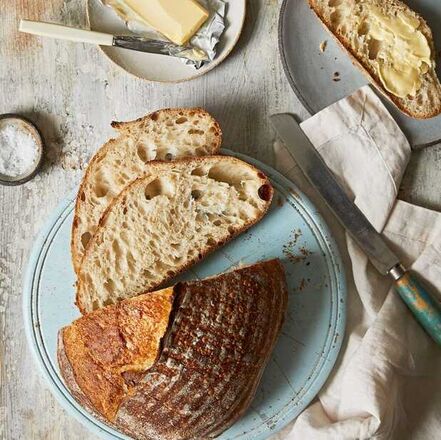|
As all you bread fans know, there is so much love and attention behind a sourdough bread. Here we share with you a tried and tested recipe so that you can try make one for yourself. Makes 1 homemade white sourdough bread If you don't have a sourdough starter click here for a easy white bread recipe using dry yeast Ingredients
Method
4 Comments
27/4/2020 05:25:05 am
Hi,
Reply
Anna
8/6/2020 04:19:44 pm
Thank you so much! Looking forward to make this one.
Reply
20/1/2023 12:07:01 pm
Thank you Anna! Share with us the outcome on Instagram and Facebook, we would love to see it.
Reply
Leave a Reply. |
